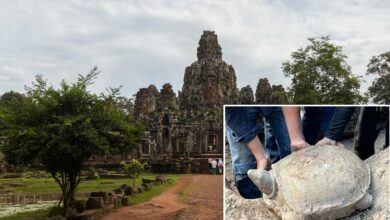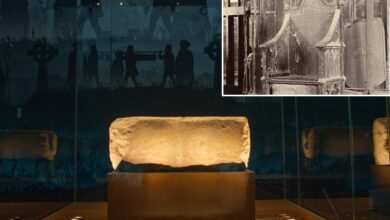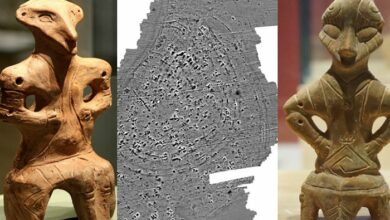Amaru (Katari) – Powerful Inca God Who Controlled Weather Phenomena

A. Sutherland – AncientPages.com – In the ancient beliefs of the Inca people, Amaru, also known as Katari, is a god appearing in the form of a creature (usually a serpent or dragon), but it is not an ordinary one.
This creature – closely tied to the Inca culture – differs significantly from typical serpents or dragons. It embodies wisdom and intellect in all aspects of agricultural and weather phenomena.
Let’s take a closer look at this remarkable deity, who, through many generations, symbolized water, irrigation, storms, wisdom, hail, and the Inca people’s survival and dependence on agriculture.
Amaru was an enormous double-headed serpent that dwelled underground at the bottom of lakes and rivers.
Amaru is portrayed with the head of a bird or a puma, but other Andean depictions showed the deity with a llama’s or a condor’s head, fishtail, and snake body. This potent deity has always had the power to influence the Inca’s imagination for a very long time and likely predated the Inca’s rise.
Credit: Mayukuna – CC BY-SA 3.0
This divine creature is shown on religious artifacts with avian feet and wings, making it look like a dragon with an extraordinary ability to cross boundaries into and out of the spiritual underworld.
The deity safeguards the farmlands and regulates crop yield, which significantly contributed to the long-term survival of the Inca people. Similarly, for the Aymara people of northwest Argentina, Bolivia, Chile, and Peru.), Amaru (Katari) represents the water flowing through their irrigation channels, facilitating seed growth and abundance.
This deity stands out from dragons in other mythologies. It’s associated with skillfully controlling water and fire to balance natural forces and the gift of life.
It has long been worshiped in August, a crucial month because it is when irrigation systems undergo cleaning, and the worship of this deity begins. This tradition is among the most ancient rituals and festivities in Inca culture. Impressively, even today, these ancestral ceremonies are still preserved and practiced.
For example, a highly respected Sui-Riu, the “rain dragon,” manages winds, clouds, and rain. This entity holds a special place in Japanese culture as it was traditionally thought to influence agricultural results, which people depended on.
Ancient texts depict the Amaru, an Andean dragon, as a deity that blesses the earth with rain and intervenes during devastating droughts. This god-like creature is so different from his counterparts in Chinese, Norse, and other parts of the European continent. Unlike those dragons, which often symbolize destruction or power, the Andean divine dragon is interpreted as a life-giver and wisdom-bringer to humanity in need.
Amaru is considered the brother of the supreme god Inti (the second husband of his mother, Pachamama the Earth goddess), while Inti’s wife was Mama Quilla (Mama-Kilya), Moon goddess of fertility and marriage
An ancient Andean drinking vessel. Image credit: 34542sdd – CC BY-SA 4.0
In some narratives, he is described as a man who transforms, gaining the power to impart wisdom to his brothers. Therefore, specific individuals were later named Amarutas, who were believed to be able to become dragons eventually.
It happens that mythological stories meet historical events. In this case, it’s worth noting that the name ‘Amaru’ was used by the last Sapa Inca, Tupac Amaru, a significant figure in Inca culture, was the final defiant Inca of the Vilcabamba dynasty.
The Amaru, a revered deity, is believed to have complete control over all weather patterns. Thanks to its tail, it can produce dew-cooling hot afternoons while the flutter of its wings brings wind. Too strong movements of the tail can even result in hailstorms, but Amaru Katari is very wise and knows exactly how to use his powers over weather patterns.
The ancient Inca could not communicate with the deity because the privilege of accessing this deity was exclusively reserved for the Amaruta priests and the Incas. They gathered all the essential information and knowledge required to sustain the Inca civilization through special ceremonies and rituals.
Written by – A. Sutherland – AncientPages.com Senior Staff Writer
Copyright © AncientPages.com All rights reserved. This material may not be published, broadcast, rewritten or redistributed in whole or part without thexpress written permission of AncientPages.com







